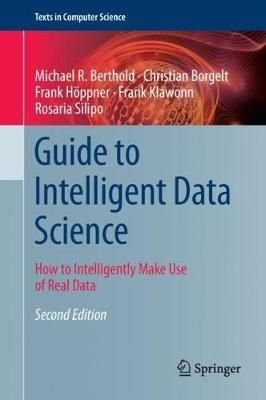Guide to Intelligent Data Science How to Intelligently Make Use of Real Data
Material type: TextLanguage: English Series: Texts in Computer ScienccePublication details: Switzerland : Springer, c2020 Edition: 2ndDescription: XIII, 420 p. : illISBN:
TextLanguage: English Series: Texts in Computer ScienccePublication details: Switzerland : Springer, c2020 Edition: 2ndDescription: XIII, 420 p. : illISBN: - 9783030455767
- 519.50285 BER
| Item type | Current library | Shelving location | Call number | Copy number | Status | Date due | Barcode |
|---|---|---|---|---|---|---|---|
 Lending Collection
Lending Collection
|
Circulation Section | Circulation Section | 519.50285 BER | 2022-23 | Available | 97854 |
Prof. Dr. Michael R. Berthold is Professor for Bioinformatics and Information Mining in the Department of Computer Science at the University of Konstanz, Germany.
Prof. Dr. Christian Borgelt is Professor for Data Science in the departments of Mathematics and Computer Sciences at the Paris Lodron University of Salzburg, Austria; he also co-authored the Springer textbook, Computational Intelligence.
Prof. Dr. Frank Hoeppner is Professor of Information Engineering in the Department of Computer Science at Ostfalia University of Applied Sciences, Wolfenbuttel, Germany.
Prof. Dr. Frank Klawonn is Professor for Data Analysis and Pattern Recognition at the same institution and head of the Biostatistics Group at the Helmholtz Centre for Infection Research, Braunschweig, Germany; he has authored the Springer textbook, Introduction to Computer Graphics.
Dr. Rosaria Silipo is a Principal Data Scientist and Head of Evangelism at KNIME AG, Zurich, Switzerland.
Summary:Major updates on techniques and subject coverage (including deep learning) are included.Topics and features: guides the reader through the process of data science, following the interdependent steps of project understanding, data understanding, data blending and transformation, modeling, as well as deployment and monitoring;
